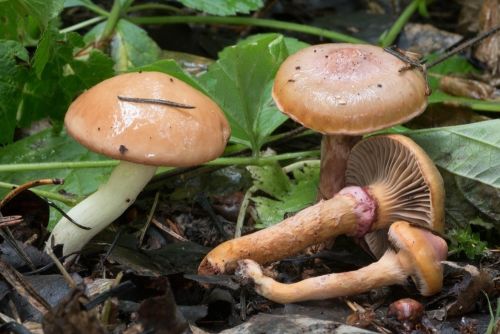The Role of Beneficial Insects in Your Garden: Nature’s Pest Control
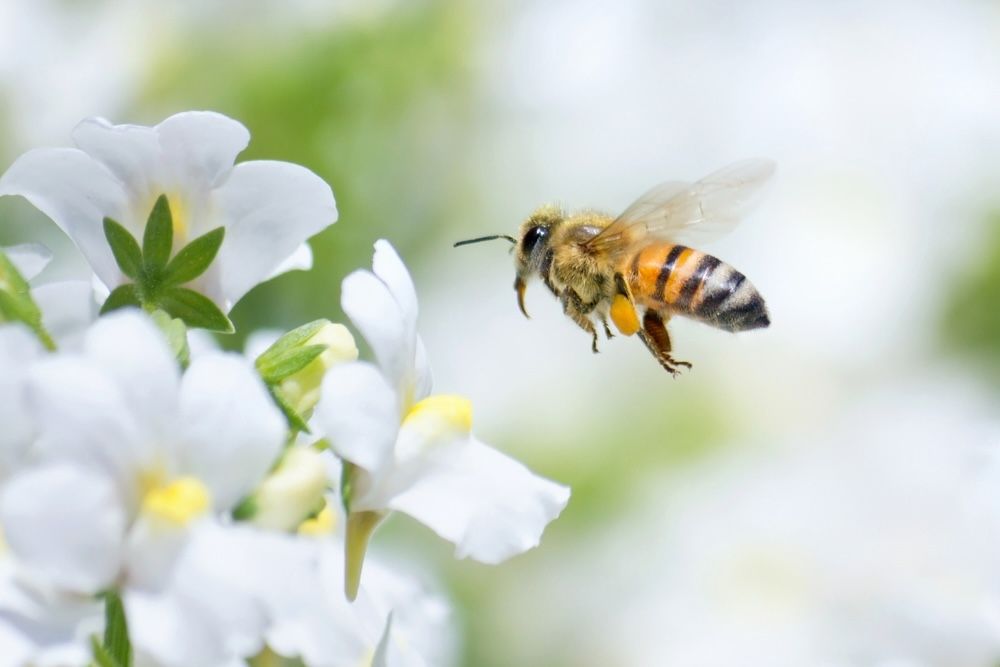
When it comes to maintaining a healthy garden, beneficial insects play a crucial role that is often overlooked. These tiny allies help control pest populations, pollinate plants, and contribute to the overall health of your garden ecosystem. In this article, we'll delve into the importance of beneficial insects, identify key species, and provide tips on how to attract them to your garden.
Why Beneficial Insects Matter
Beneficial insects are nature's pest control agents. They help manage harmful insect populations, reducing the need for chemical pesticides that can harm the environment and non-target species. By fostering a habitat for these helpful creatures, gardeners can achieve a more sustainable and balanced ecosystem.
Pest Control
Many beneficial insects are natural predators of common garden pests. For example, ladybugs and lacewings prey on aphids, while ground beetles target slugs and snails. By controlling these pest populations, beneficial insects help protect plants from damage and disease.
Pollination
In addition to controlling pests, some beneficial insects, such as hoverflies, also play a vital role in pollination. Pollinators are essential for the reproduction of many flowering plants, including fruits and vegetables. By attracting pollinators to your garden, you can improve crop yields and promote biodiversity.
Soil Health
Certain beneficial insects, like ground beetles, contribute to soil health by breaking down organic matter and promoting nutrient cycling. Their activities help improve soil structure, aeration, and fertility, which in turn supports healthy plant growth.
Key Beneficial Insect Species
Understanding the different types of beneficial insects and their roles can help you make informed decisions about how to attract and support them in your garden.
1. Ladybugs (Coccinellidae)
Ladybugs are voracious predators of aphids, scale insects, and mites. A single ladybug can eat up to 50 aphids a day. These beetles are particularly effective in controlling aphid populations, which can otherwise cause significant damage to plants. Ladybugs are easily recognizable by their bright red or orange bodies with black spots.
Attracting Ladybugs:
Plant flowers such as marigolds, calendula, and dill, which provide nectar and pollen for adult ladybugs.
Avoid using chemical pesticides that can harm ladybugs and other beneficial insects.
Provide shelter in the form of mulch, leaf litter, or small piles of rocks where ladybugs can hide and breed.
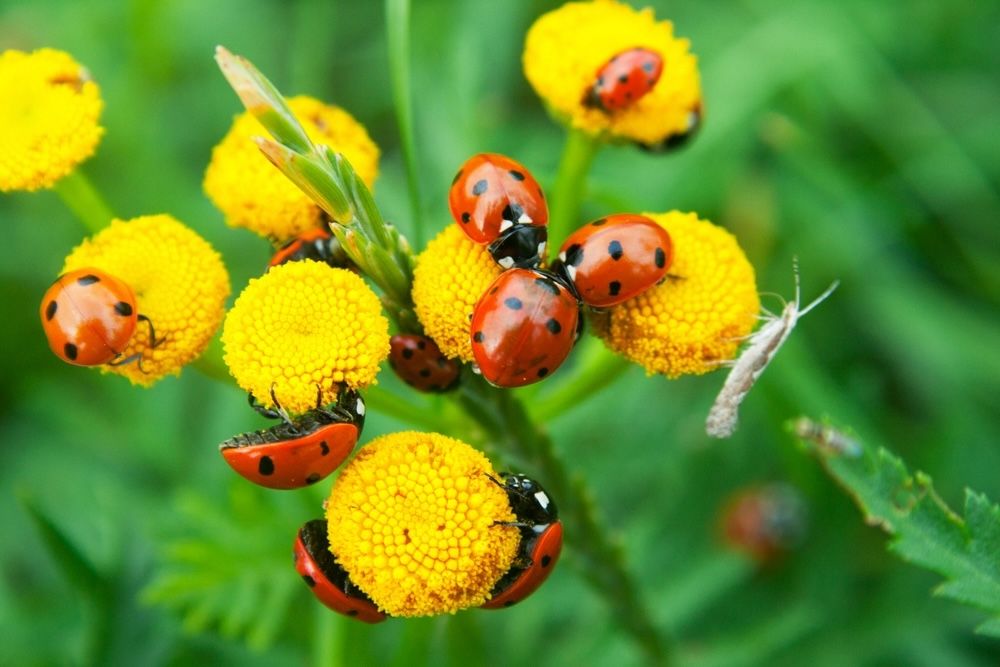
2. Lacewings (Chrysopidae)
Lacewings, especially in their larval stage, are powerful predators of aphids, caterpillars, and other soft-bodied pests. They are often called "aphid lions" because of their effectiveness in controlling these pests. Lacewing larvae have long, slender bodies and large, sickle-shaped jaws.
Attracting Lacewings:
Plant flowers such as yarrow, cosmos, and dill to provide nectar and pollen for adult lacewings.
Create habitats with shrubs and perennials where lacewings can lay their eggs.
Avoid using broad-spectrum insecticides that can kill lacewings.

3. Parasitic Wasps (Braconidae, Ichneumonidae)
Parasitic wasps lay their eggs inside or on the surface of host insects, such as caterpillars or aphids. The developing wasp larvae feed on the host, eventually killing it. These wasps are highly specialized and do not pose a threat to humans or pets. Parasitic wasps vary in size and appearance, but they often have slender bodies and long antennae.
Attracting Parasitic Wasps:
Plant a variety of flowering plants that produce small, clustered blooms, such as dill, fennel, and alyssum.
Provide water sources, such as shallow dishes or bird baths, to keep wasps hydrated.
Avoid disrupting their habitats by minimizing soil disturbance and maintaining garden diversity.
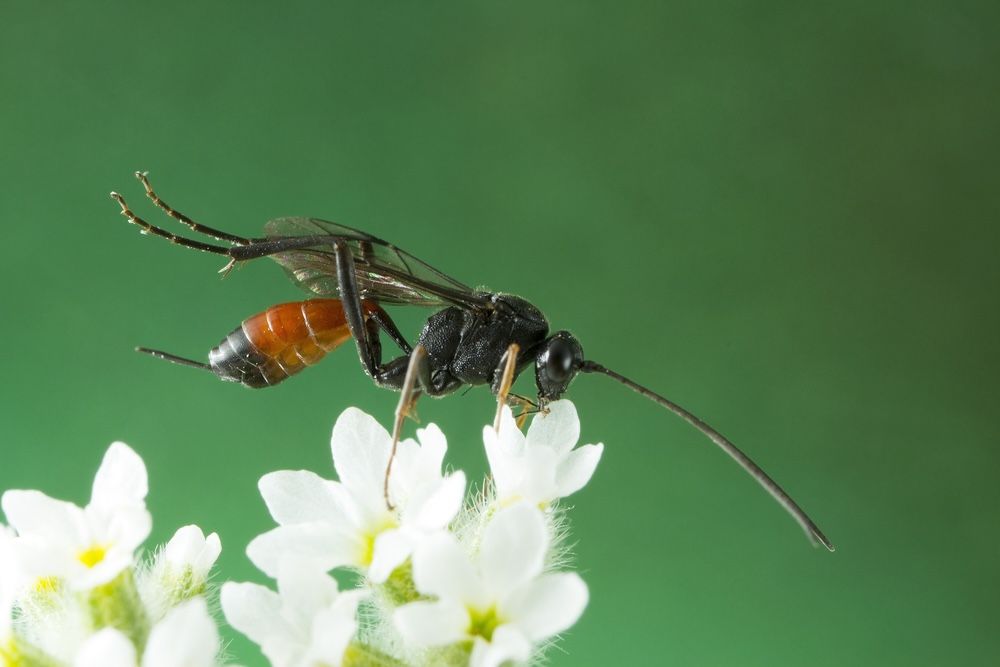
4. Ground Beetles (Carabidae)
Ground beetles are nocturnal hunters that prey on a variety of garden pests, including slugs, snails, and root maggots. They also feed on weed seeds, helping to reduce unwanted plant growth. Ground beetles are typically black or dark brown with hard, shiny exoskeletons and long legs.
Attracting Ground Beetles:
Create habitats with mulch, compost piles, and rocks where ground beetles can hide during the day.
Plant ground cover crops, such as clover or vetch, to provide shelter and food for ground beetles.
Avoid using pesticides that can harm ground beetles and other beneficial insects.
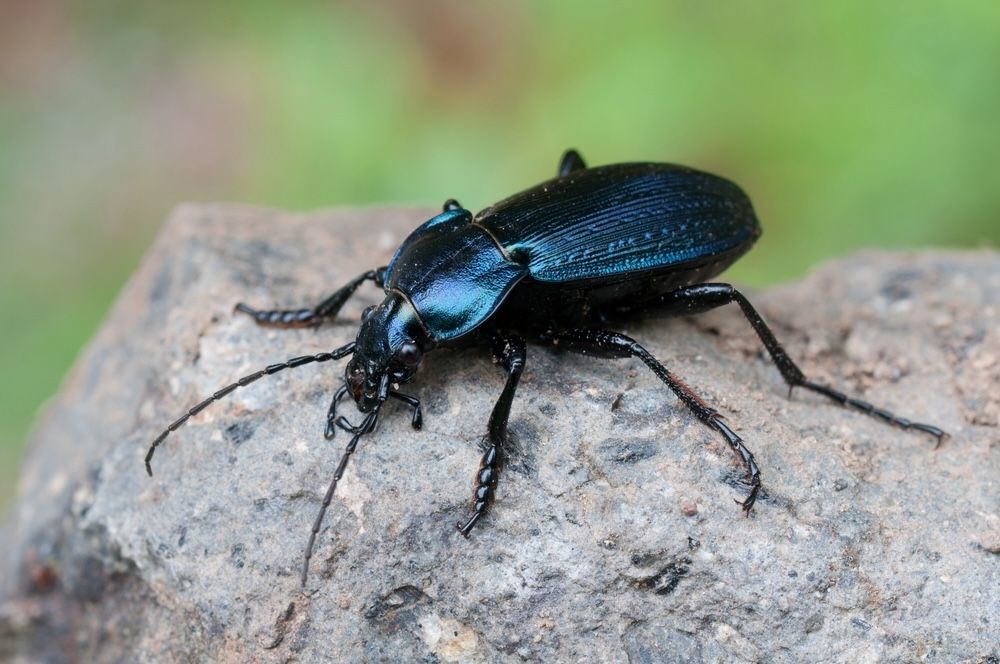
5. Hoverflies (Syrphidae)
Hoverfly larvae are effective predators of aphids, thrips, and other plant-sucking insects. Adult hoverflies also contribute to pollination, making them doubly beneficial for gardens. Hoverflies resemble small bees or wasps but are harmless and can hover in place like hummingbirds.
Attracting Hoverflies:
Plant flowers such as alyssum, marigolds, and calendula to provide nectar and pollen for adult hoverflies.
Create diverse planting schemes with a mix of flowering plants that bloom at different times throughout the season.
Provide water sources, such as shallow dishes or bird baths, to attract hoverflies.

6. Predatory Mites (Phytoseiidae)
Predatory mites are tiny, spider-like creatures that feed on harmful mites, thrips, and small insect larvae. They are particularly effective in controlling spider mites, which can be difficult to manage with traditional pest control methods.
Attracting Predatory Mites:
Introduce predatory mites directly into your garden if you have a significant spider mite problem.
Maintain a humid environment by regularly misting plants.
Avoid using broad-spectrum insecticides that can harm predatory mites.
7. Soldier Beetles (Cantharidae)
Soldier beetles are beneficial insects that feed on aphids, caterpillars, and other soft-bodied pests. Adult soldier beetles also contribute to pollination by feeding on nectar and pollen.
Attracting Soldier Beetles:
Plant goldenrod, milkweed, and hydrangea to provide nectar and pollen.
Create a diverse garden with plenty of flowering plants.
Provide shelter with mulch, leaf litter, and rocks.
8. Tachinid Flies (Tachinidae)
Tachinid flies are parasitoids that lay their eggs on or inside host insects, such as caterpillars and beetles. The larvae feed on the host, ultimately killing it. Tachinid flies are important biological control agents for various pests.
Attracting Tachinid Flies:
Plant flowers from the carrot family, such as dill, parsley, and fennel, which provide nectar and pollen.
Avoid using chemical pesticides that can harm tachinid flies.
Create diverse plantings to support a variety of insect species.
9. Minute Pirate Bugs (Anthocoridae)
Minute pirate bugs are tiny predatory insects that feed on thrips, aphids, spider mites, and small caterpillars. They are highly effective at controlling pest populations in gardens and greenhouses.
Attracting Minute Pirate Bugs:
Plant flowering herbs like coriander, fennel, and dill.
Maintain a habitat with diverse plant species.
Minimize pesticide use to avoid harming these beneficial insects.
10. Spined Soldier Bugs (Podisus maculiventris)
Spined soldier bugs are predatory stink bugs that feed on caterpillars, beetle larvae, and other soft-bodied pests. Unlike their plant-feeding relatives, spined soldier bugs are beneficial for pest control.
Attracting Spined Soldier Bugs:
Plant shrubs and perennials that provide cover and nectar sources.
Avoid broad-spectrum insecticides that can kill spined soldier bugs.
Provide a habitat with leaf litter and mulch.
11. Damsel Bugs (Nabidae)
Damsel bugs are slender, predatory insects that feed on aphids, caterpillars, leafhoppers, and other small pests. They are active hunters and play a vital role in controlling pest populations.
Attracting Damsel Bugs:
Plant a variety of flowering plants that attract other insects as prey.
Create habitats with ground cover and mulch.
Reduce pesticide use to protect damsel bugs.
12. Assassin Bugs (Reduviidae)
Assassin bugs are generalist predators that feed on a wide range of insects, including caterpillars, beetles, and leafhoppers. They use their long, curved beaks to inject a lethal toxin into their prey.
Attracting Assassin Bugs:
Plant a diverse range of flowering plants to provide habitats for prey insects.
Create shelter with rocks, leaf litter, and mulch.
Avoid using chemical pesticides that can harm assassin bugs.
How to Attract Beneficial Insects
Creating a garden environment that attracts and sustains beneficial insects involves several key practices:
1. Plant Diversity
A diverse range of plants provides various habitats and food sources for beneficial insects. Include flowering plants, shrubs, and ground covers to create a layered habitat. This diversity not only supports beneficial insects but also enhances the overall health and resilience of your garden.
Tips for Plant Diversity:
Incorporate native plants that are well-suited to your local climate and soil conditions.
Plant a mix of perennials and annuals to ensure continuous blooms throughout the growing season.
Use companion planting techniques to create mutually beneficial plant relationships and attract a variety of beneficial insects.
2. Native Plants
Native plants are well-adapted to local conditions and tend to attract native beneficial insects. Research and incorporate native species that are known to support beneficial insect populations. Native plants also require less maintenance and are more resistant to pests and diseases.
Examples of Native Plants:
Goldenrod (Solidago spp.)
Coneflower (Echinacea spp.)
Milkweed (Asclepias spp.)
Aster (Aster spp.)
3. Avoid Pesticides
Chemical pesticides can kill beneficial insects along with pests. Opt for organic or natural pest control methods, such as neem oil or insecticidal soaps, when necessary. These alternatives are less harmful to beneficial insects and the environment.
Organic Pest Control Methods:
Introduce beneficial nematodes to control soil-dwelling pests.
Use diatomaceous earth to deter crawling insects.
Apply horticultural oils to smother insect eggs and larvae.
4. Provide Shelter
Create habitats for beneficial insects by incorporating elements such as insect hotels, rock piles, and mulch layers. These provide shelter and breeding grounds for various insect species. Additionally, maintaining some undisturbed areas in your garden can help support overwintering insects.
Shelter Ideas:
Build insect hotels using hollow stems, twigs, and small wooden blocks.
Leave leaf litter and dead wood in certain areas to provide natural habitats.
Use mulch to create a moist environment that supports ground-dwelling insects.
5. Plant Nectar and Pollen Sources
Many beneficial insects rely on nectar and pollen during their adult stages. Plant a variety of flowering plants that bloom throughout the growing season to ensure a continuous food supply. This not only attracts beneficial insects but also supports pollinators like bees and butterflies.
Flowering Plants for Nectar and Pollen:
Sunflower (Helianthus spp.)
Lavender (Lavandula spp.)
Bee balm (Monarda spp.)
Borage (Borago officinalis)
Marigold (Tagetes spp.)
Yarrow (Achillea millefolium)
Cosmos (Cosmos spp.)
Dill (Anethum graveolens)
Alyssum (Lobularia maritima)
Fennel (Foeniculum vulgare)
Goldenrod (Solidago spp.)
Coneflower (Echinacea spp.)
Anise Hyssop (Agastache foeniculum)
Catmint (Nepeta spp.)
Zinnia (Zinnia spp.)
Phacelia (Phacelia tanacetifolia)
Conclusion
By understanding and fostering beneficial insects, gardeners can enhance the health and productivity of their gardens while reducing reliance on chemical pest control methods. Incorporating these natural allies into your gardening strategy promotes a balanced ecosystem and contributes to a more sustainable and thriving garden environment. Embrace the power of beneficial insects and let nature's pest control work its magic in your garden. By creating a welcoming habitat for these helpful creatures, you'll enjoy a healthier, more vibrant garden that flourishes with minimal intervention. Happy gardening!
Check more articles on our blog
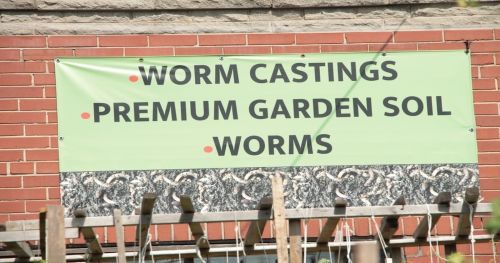
Worm Castings: Perfect Natural Fertilizer for Gardens

Maximizing Garden Efficiency with Vertical Gardening

The Role of Beneficial Insects in Your Garden: Nature’s Pest Control
